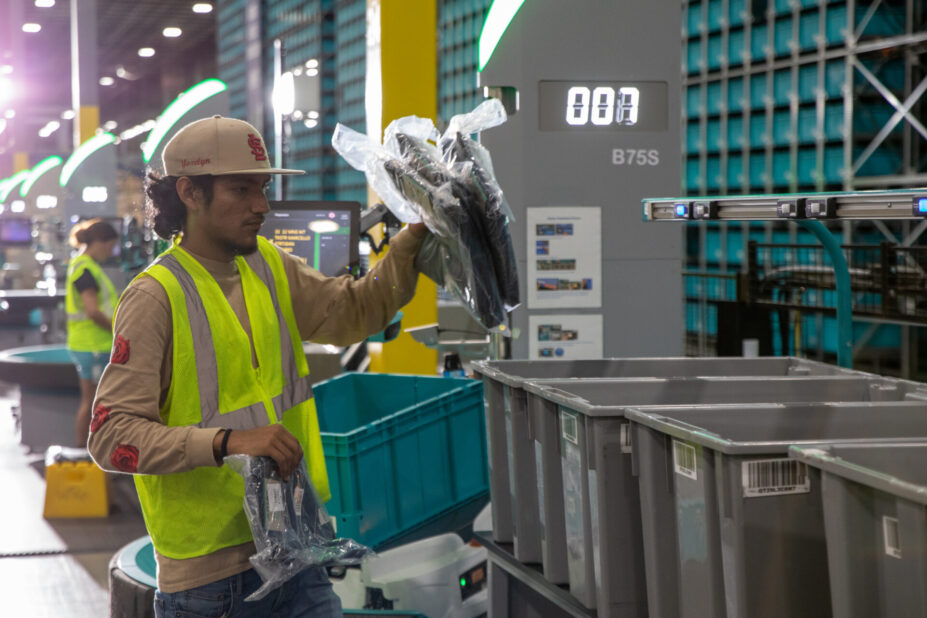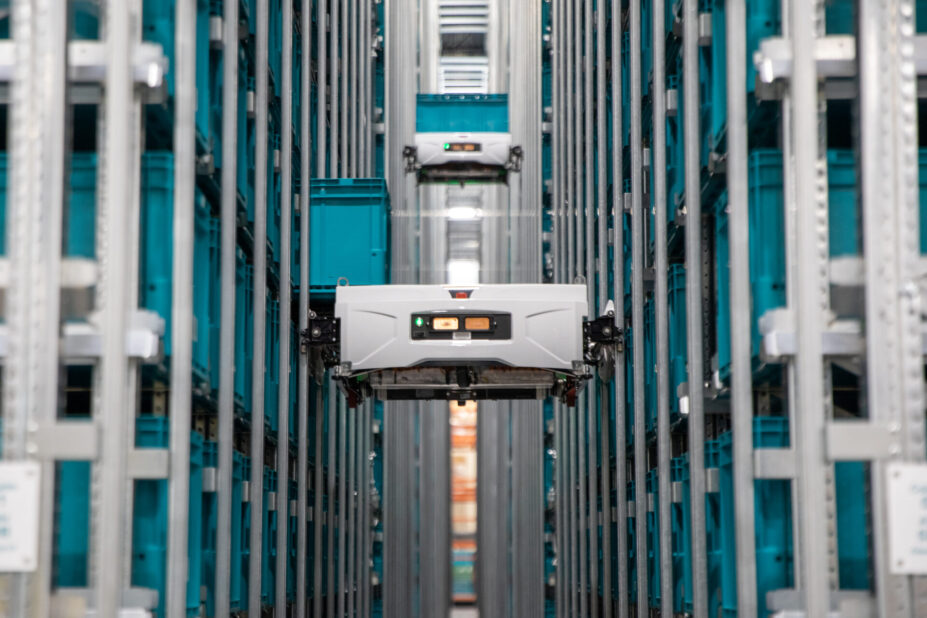In the dynamic world of warehouse management, finding the optimal mix of performance and flexibility is paramount to setting businesses up for future success. The Automated Storage and Retrieval System (AS/RS) is central to this modern operational competency. An AS/RS is a mechanized or robotics system engineered to expedite the storage and retrieval of goods within a warehouse environment, optimizing space utilization and significantly improving the overall workflow.
The roots of AS/RS technology trace back to the 1960s, a period marked by a burgeoning need for faster, more efficient storage solutions amidst the wave of industrialization. Unlike the slow-evolving traditional AS/RS technologies of the past decades, the recent emergence of robotic providers has brought innovative solutions tailored for today’s dynamic warehouse demands, offering a significant leap toward meeting rapidly changing market conditions and supply chain challenges.
Investing in AS/RS
Implementing an Automated Storage and Retrieval System (AS/RS) can be the most impactful investment a business makes toward enhancing warehouse operations and, by extension, its overall supply chain efficiency. The ripple effect of this investment significantly contributes to elevating customer experiences, which is crucial in a competitive market landscape.
A staggering 80% of consumers are reported to switch allegiance to a competitor following just one unsatisfactory encounter, with this tendency persisting whether it’s a customer’s first purchase or their 50th. In light of such data, the impetus for businesses to prioritize operational efficiency and accuracy is abundantly clear. By fostering a more efficient, reliable, and rapid operational ecosystem, AS/RS systems are pivotal in ensuring customer satisfaction and loyalty, solidifying a brand’s standing in the market.
Enhancing Speed and Efficiency
AS/RS systems are designed to take on the redundant, strenuous, and time-intensive tasks traditionally associated with manual labor in order fulfillment. Utilizing intelligent software to automate the storage and retrieval of goods, these systems remarkably boost efficiency and speed within the operational workflow. The automation frees up valuable time and human resources, which can be reallocated to more strategic, value-adding tasks within the warehouse such as quality control or customer packaging.
Optimizing Warehouse Space
AS/RS systems maximize storage efficiency by utilizing available vertical space in warehouses, often with racks reaching the ceiling. This density is crucial for maximizing storage, especially amid increasing commercial real estate costs, enabling operations to thrive in smaller facilities and efficiently operate micro-fulfillment centers.
Reducing Costly Errors
Order accuracy is critical; even a small error rate can lead to numerous incorrect orders and unhappy customers. The average order-picking accuracy rate is 99.4%, meaning out of 1,000,000 orders, 6,000 will be incorrect. This can quickly become a costly issue, particularly with the rising trend of returns. According to Insider Intelligence returns exceeded $600 billion during 2023, with the average cost of a returned order amounting to 21% of its total value.
Precision is paramount in warehouse management. AS/RS efficiently transport goods to operators at picking stations, often equipped with tools like pick-to-light systems for picking from multi-SKU bins, eliminating guesswork and ensuring precise order fulfillment.
Enhancing Safety and Reducing Workplace Accidents
Safety is paramount in warehouse operations. AS/RS systems significantly mitigate the risks associated with manual handling of goods. Minimizing the need for human intervention in storage and retrieval processes reduces the likelihood of workplace accidents considerably. Furthermore, the systematic organization of goods within an AS/RS minimizes the risks associated with falling objects or misplacements, fostering a safer work environment.
In summation, the benefits of AS/RS extend well beyond operational efficiency, permeating through various facets of warehouse management. The result is a streamlined, cost-effective, and more worker-friendly operational environment, poised to meet the demands of today’s market requirements.

An order being completed at an Exotec Skypod system station
Types of AS/RS
Automated storage and retrieval systems (AS/RS) offer diverse configurations tailored to meet a range of operational needs. Understanding the distinct types of AS/RS and their respective advantages is pivotal for making informed decisions in optimizing warehouse operations. Let’s delve into the various types of AS/RS and explore their comparative merits and use cases.
Module Based Systems
- Vertical Lift Modules: These systems operate within an enclosed module comprising two racks for storing goods. An automated lift travels vertically between the racks to store and transport goods to integrated picking stations within the module.
- Carousel Systems: These systems also operate within an enclosed module. They consist of rotating shelves that move vertically or horizontally to bring ordered goods to picking stations that are integrated within the module.
- Pros & Cons: Module based systems offer swift implementation and enhanced throughput over manual operations, yet they lag behind systems like shuttles systems and mobile ASRS in throughput capabilities. Although they provide denser storage than manual operations, their fixed sizes may underutilize warehouse vertical space and prompt premature equipment purchases if storage or throughput capacity outgrows the implemented modules.
Traditional AS/RS
- Mini Loads: These systems utilize large cranes that travel between aisles to store and retrieve goods. The crane picks up ordered goods and transports them to conveyors, which lead to picking stations.
- Shuttle Systems: These systems operate using multiple shuttle devices that travel horizontally within storage racks to store and retrieve goods. After picking up ordered goods, the shuttles transfer them to vertical lifts located at the end of racks. The vertical lifts transport the items to a conveyor system, which leads to picking stations.
- Pros & Cons: Traditional automation provides high throughput and storage density. However, the interdependency of storage and throughput equipment means expanding one requires expanding the other, potentially leading to overinvestment in either aspect. Moreover, due to their heavy mechanization, expanding these systems is time-consuming, limiting flexibility.
Robotic AS/RS
- Cube Storage: Goods are organized into bins that are stacked within a cube-shaped structure. Robots operate atop the cube, managing bin shuffling, sorting, retrieval, and delivering them to picking stations.
- Mobile ASRS: These systems utilize autonomous mobile robots that travel between storage racks and picking stations to store and retrieve goods.
- Pros & Cons: Robotic automation solutions excel in flexibility, enabling rapid throughput ramp-up by adding more robots or expanding storage racks with minimal interruption to ongoing operations. Despite being relatively new, robotics are emerging as the preferred choice for the agility needed in an unpredictable future.
AS/RS Applications
The adoption of automated storage and retrieval systems (AS/RS) in sectors such as e-commerce, retail, grocery, industrial, and healthcare highlights its versatility in modernizing a diverse range of warehouses. The case of Rediv, a leader in second-hand fashion, illustrates the transformative impact of AS/RS on warehousing operations.
Rediv Case Study:
Rediv, a major player in Europe’s second-hand fashion market, faced challenges in managing an expanding catalog within a 3,500 m² warehouse in southwest France. Their automation implementation goals centered around enhancing order fulfillment and operational flexibility. Implementing the Skypod system led to a 4X increase in throughput, boosting capacity for swift, same-day shipping to customers while minimizing their fulfillment operation’s footprint. Designed for scalability, the system allows for quick addition of robots, stations, and storage racks with little to no impact to ongoing operations.
Eric Gagnaire, CEO and co-founder of Rediv, appreciated the flexibility of the chosen solution: “The flexibility of the goods-to-person system was decisive in our choice of robotic solution. We were convinced by the ability to adapt to our industry and its constraints.”
For a detailed insight into Rediv’s challenges, the AS/RS solution implemented, and the transformative results achieved, we invite you to read the full case study.
Choosing the Right AS/RS Solution
Choosing the right Automated Storage and Retrieval System (AS/RS) for your warehouse operations requires a deep understanding of current needs and future goals. The right AS/RS for your operations can greatly improve warehouse efficiency and accuracy, while creating a better environment for employees. However, navigating the multitude of solution providers poses a challenge. Here are crucial factors to contemplate when choosing an AS/RS.
- Operational Needs: Assess the specific operational requirements, including the volume of goods, throughput needs, and the level of granularity in inventory management required.
- Space Constraints: Evaluate the available space and how different AS/RS configurations can optimize space utilization.
- Budget: Determine the budgetary allowances, considering the upfront investment and long-term operational savings.
- Integration Capabilities: Consider how seamlessly the AS/RS system can integrate with existing warehouse management systems and operational workflows.
- Scalability: Assess the scalability of the system to ensure it can grow in tandem with the evolving needs of the warehouse.
- Support & Maintenance: Examine the level of support and maintenance services the vendor provides to ensure smooth operations post-implementation.

Skypod robots retrieving order goods from high density storage racks
Skypod System: The Optimal AS/RS
The Exotec Skypod system is a mobile ASRS offering the optimal mix of performance and flexibility. It utilizes autonomous mobile robots to store goods in high-density racks and deliver them to ergonomic picking stations. With up to 5X throughput compared to manual operations and retrieval times of under two minutes, it meets the demands of fast shipping for all inventory.
This modular system decouples throughput from storage, ensuring industry-leading flexibility. Thus, increasing throughput doesn’t require a proportional increase in storage, preventing unnecessary equipment spending. Additionally, the system is channel-agnostic, serving both B2B and B2C orders seamlessly with both case and piece picking capabilities.
Ready to transform your warehouse?
Let us show you how we can take your order preparation to the next level.
Share
News
-
July 3, 2025Exotec’s Next Generation of Skypod System Wins 2025 IFOY Award
-
June 18, 2025Exotec Inaugurates Demo Center for Next Generation Skypod in Korea, Strengthening Commitment to Local Market
-
June 12, 2025Exotec North America Opens Exostudio: A New, State-of-the-Art Demo Center Showcasing the Latest Warehouse Automation Technology
Events
-
September 9, 2025 | BirminghamIMHX 2025, le rendez-vous logistique à ne pas manquer
-
October 16, 2025 | OsloThe Arc - Conference | Norway
-
November 4, 2025 | GöteborgLogistik & Transport Trade Fair | Sweden